– Welcome, everyone, to Wednesday Nite @ the Lab. I’m Tom Zinnen. I work at the UW-Madison Biotechnology Center. I also work for the Division of Extension, Wisconsin 4-H. And on behalf of those folks and our other co-organizers, PBS Wisconsin, the Wisconsin Alumni Association, and the UW-Madison Science Alliance, thanks again for coming to Wednesday Nite @ the Lab. We do this every Wednesday night, 50 times a year. Tonight, it’s my pleasure to introduce to you Sumudu Atapattu. She is the Director of Research Centers at the UW-Madison Law School. She was born and raised in Sri Lanka and got her first law degree there. Then she got two more law degrees at the University of Cambridge in the United Kingdom, including a PhD in international environmental law.
She came to UW-Madison in 2002. Tonight, she’s gonna speak with us about climate change, environmental justice, and human rights. Would you please join me in welcoming Sumudu Atapattu to Wednesday Nite @ the Lab?
– Thank you very much, Tom, for that introduction. So as Tom pointed out, I’m going to talk to you about climate change, environmental justice, and human rights today. To summarize, from severe weather events to sea level rise, climate change is causing massive disruption around the world. We know that no nation or community will be spared these consequences, but not all nations and communities will experience these adverse consequences equally. Unfortunately, historically marginalized communities, poor people, and poor countries will experience these consequences disproportionately, even though their contribution to climate change is relatively small, and this raises justice concerns. We also know that greenhouse gas emissions continue to increase, raising doubts as to whether we will be able to limit the temperature increase to 1. 5 degrees Celsius, as required under the Paris Agreement. And because of the need to take drastic, urgent action, Indigenous leaders urged President Biden recently to declare a climate emergency.
So this presentation looks at the consequences of climate change, especially on those communities and countries that are disproportionately affected, and I discuss the role of environmental justice and human rights because the enjoyment of rights is seriously jeopardized by the consequences of climate change. And this picture shows the UN Secretary-General in knee-deep water on the cover of the Time magazine, and it’s, the caption is “Our Sinking Planet. ” So to outline my presentation today, I will discuss what we know right now about climate change. The Intergovernmental Panel on Climate Change is working on its Sixth Assessment Report, and I will discuss a little bit about what they said, the impacts on people and the environment, the consequences of climate change on marginalized communities and communities disproportionately impacted, so such as small island states and climate refugees, the role of environmental justice and human rights, and I will also talk a little bit about the recent Human Rights Council resolution, which recognized the right to, human right to a healthy environment for the first time. And I will also talk a little bit about the climate conference held recently in Glasgow, COP26, and I will conclude with some thoughts. So what do we know about climate change? We know that Earth is warming, and temperatures have warmed about 2 degrees Fahrenheit, that is 1. 1 degrees Celsius, since the Industrial Revolution. And this is a permanent increase in temperature. We are not referring to day-to-day fluctuations in the temperature. And the Intergovernmental Panel on Climate Change stress that the evidence is clear that the Earth is warming, and, more importantly, humans are largely responsible for this temperature increase.
They said this with over 95% certainty. And the last four decades, last four years, 2016 to 2020, have been the four hottest years on record. And for the first time, you may recall, that western Canada saw temperatures of 50 degrees Celsius, which is about 122 degrees Fahrenheit, earlier this year. Climate change affects everyone, but as I said earlier, it’ll affect some communities and states more than others. And there are many reasons for this. And climate change is already affecting millions of people worldwide. And, unfortunately, millions will be forced to leave their homes because of climate change, and this is already happening, and I will give some examples. This chart shows us the contribution to greenhouse, contribution of greenhouse gas emissions by economic sector. As we know, electricity and heat production accounts for 25%, the largest chunk, and agriculture and forestry are not far behind at 24%. Transportation accounts for 14% and industry about 21%.
Buildings, about 6% and other energy users, 10%. So this shows us that every sector of the economy is contributing to climate change, which makes climate change a very complex issue to address. On the right side, the chart shows us the greenhouse gas emissions by gas, and carbon dioxide accounts for the majority of the emissions, but methane, which is more potent, also accounts for 16% of the emissions. And this chart shows how the temperature has increased since the Industrial Revolution. And as we can see, the temperature has increased consistently, and right now, the temperature is off this chart now, temperature increase. So the Intergovernmental Panel on Climate Change in its Sixth Assessment Report, it has not been published yet, but there was a news item recently about this. The IPCC said that we cannot avoid some of the devastating impacts. There’s still a narrow window to keep the situation from worsening, but we have locked in about 30 years of worsening climate impacts, no matter what we do. We have emitted so much greenhouse gases that warming will continue until the middle of the century. This means that many of the consequences we see today will continue to get worse.
The report continued that these impacts will continue for long, other impacts will continue for longer. That is because of the melting of ice sheets, global sea level will continue to rise for at least 2,000 years. Imagine that! The other thing that the report said was that these impacts are happening faster than we expected. So, what does that mean? That means that we have to learn to live with these consequences. We need to try and minimize the impact on people, not just people, but other species and biodiversity. We should try and increase the resilience of communities to adapt to these consequences. And we must also build better infrastructure to withstand these consequences. But the report also said that some communities will have to be relocated because it’ll be too dangerous for them to live where they’re living right now, and this is already happening right here in the United States. And you may recall that during the last winter, Texas plunged into darkness, and, because it was not able to withstand the increased, sorry, the cold temperatures, and unless we do something about infrastructure, these consequences will get worse, unfortunately. The United Nations Environment Program issues what is called the Emissions Gap Report every year, looking at the greenhouse gas emission reduction commitments that states have made and what is required.
So the UNEP said in its report that there’s a huge gap between what is promised by states and what is actually needed in terms of emission reductions. And the report said that when we add up, combine all the pledges that states have made and other mitigation measures they have already undertaken, we are still on track for a global temperature increase of 2. 7 degrees Celsius by the end of the century. Remember, under the Paris Agreement, states agreed to limit the temperature increase to 1. 5 degrees Celsius. Beyond that, scientists agree that the consequences will be far worse on human beings and the environment, and imagine what a 2. 7 degree increase will look like. So this is far beyond the Paris commitment that states made. So to keep the temperature increase to 1. 5 degrees, we need to halve our greenhouse gas emissions by 2030 and go for net zero emissions by 2050, net carbon emissions by 2050.
And this picture shows the Canadian record temperatures in British Columbia in July 2021, which caused massive wildfires as well. So, what are the impacts on people? We are looking at water scarcity, land degradation, and desertification. There will be impacts on food production and food security, there will be health impacts, including mental health impacts, and increase in vector-borne diseases like malaria, which temperate countries have not seen before. There will be frequency and intensity of extreme weather events like flooding, drought, tropical storms, and hurricanes, which we are already experiencing. Sea levels are rising, there will be increased wildfires, mass displacement of people, and as we know, we are already witnessing many of these consequences. And inaction on climate change imperils millions of lives. Several health experts got together recently and issued this statement. They said that climate change is set to become the defining narrative of human health, triggering food shortages, deadly disasters, and disease outbreaks that would dwarf the toll of the coronavirus. They also pointed out that aggressive efforts to curb greenhouse gas emissions could avert millions of unnecessary deaths, and this was what more than 100 health experts said in a statement recently. And we also remember the bushfires in Australia at the end of last year, which, again, affected millions of people and animals.
Many, many animals perished in these bushfires. We are looking at severe weather events associated with climate change, flooding, again, affecting millions of people. You may recall Hurricane Sandy in 2012, again, which caused millions of dollars in damages, as well as affected lives. Hurricane Maria more recently. Again, looking at these pictures, you wonder how people can rebuild their lives, not to mention of the, not to mention the human toll of these severe weather events. The United Nations Environment Program looked at environmentally induced migration, which has the potential to become a phenomenon of unprecedented scale and scope, and its effects on the global economy, international development, the economy, national economies is significant and, as well as the impact on human security. Small island states are going to be affected much more than others with sea level rise and severe weather events. It’s likely that these islands will become uninhabitable in the future. So there was a Security Council debate on climate change and international peace and security, and some of the small island states made statements at this debate. The Papua New Guinea representative, for example, said that impact of climate change on small island states is no less threatening than the dangers guns and bombs pose to large nations.
“Pacific island countries are likely to face “massive dislocations of people, similar to population flows sparked by conflict. ” The Maldives said that over 60% of habitable land will be eroded. And Tuvalu said, “Our nation statehood is at stake, and we are moving from a cold war to a warming war. ” The World Commission on Environment and Development pointed out that states, even poor states, spend far more on military expenditure than on social programs, such as poverty alleviation and education. They do not fully appreciate the impact of a degraded environment on their economy. Yet most of the affected governments still spend far more to protect their people from invading armies than from invading deserts. So if you look at climate change impacts in the U. S. , the Environmental Protection Agency said climate change impacts our health, environment, and the economy. Warmer temperatures increase frequency, intensity, and the duration of heat waves, posing health risks, especially for children and the elderly.
Worsening air and water quality is also of concern in the increase and spread of diseases and the frequency and intensity of extreme weather events. Rising sea levels threaten coastal communities and ecosystems, and as we know, flooding in Florida is now very common and there are changes in patterns and amount of rainfall, and this can affect water supplies as well as quality and production of hydroelectricity. And already, California and Colorado are experiencing water shortages. And we have also experienced these extreme weather events, and we know that climate change is increasing the frequency and intensity of these events, and that’s causing not just economic impacts, but disruption to society as well as ecosystems. And relocation of communities, unfortunately, has become a necessity. This picture shows the temperature increase in the U. S. , but of course this is 2012 data, but it’s clear that temperatures have increased countrywide. And if you look at climate change impacts in Wisconsin, as you may know, the governor established a task force on climate change, which stress that the change in climate is impacting everyone. Climate inaction has huge health and economic costs, which is already weighing on Americans.
It referred to a 2019 study, referring to 10 climate sensitive events in the U. S. For example, extreme heat in Wisconsin, harmful algal bloom in Florida, and western wildfires. They have cost an estimated $10 billion in health costs alone. In Wisconsin, we have experienced extreme heat events, which cause stress, heat strokes, and heat exhaustion, and additionally, of course, we have also experienced severe weather events in terms of tornadoes, flooding, and similar events. Economically, Wisconsin communities have suffered millions of dollars in damages due to extreme precipitation, leading to flooding and storm surge. Climate change also is impacting agriculture and livestock sectors. The Wisconsin Initiative on Climate Change Impacts said how climate change is impacting Wisconsin broadly and which communities bear disproportionate impacts. Since 2000, sorry, 1950, Wisconsin has warmed 2. 1 degrees Fahrenheit, and the annual precipitation has increased by 15%.
This initiative also pointed out that Black, Indigenous, and other minorities, as well as low-income communities, are bearing disproportionate impact of climate change, and this is what we see in the U. S. as well as worldwide. And this shows the temperature increase in Wisconsin. As we can see, the whole state has seen increased temperatures. So turning now to human rights, Mary Robinson, who was the former president of Ireland, said that she believes climate change is the biggest human rights issue of the 21st century. So although the impact of climate change on human beings is obvious, and we saw the impacts ranging from water scarcity to climate displacement, it was not considered as a human rights issue until, like, maybe 10 years ago. So in 2009, the UN Human Rights Council adopted a resolution on climate change and human rights and requested the Office of the UN High Commissioner for Human Rights to prepare a report on the link between human rights and climate change. And this report recognized that almost all human rights could be affected by climate change. The report pointed out some of the consequences as we discussed earlier, water scarcity, food scarcity, desertification, severe weather events, flooding.
These are all causing damage to people and the economy and has an impact on protected rights. States have already signed on to human rights treaties, and they have to ensure that these obligations are fulfilled in relation to adverse consequences relating to climate change as well. There’s no doubt that climate change will undermine many of the protected rights, but we need to discuss human rights in relation to damage caused by historic emissions. What we are experiencing today, the adverse consequences we experience today are due to the greenhouse gas emissions that were emitted many, many years ago. And we need to discuss the duties of states in relation to mitigation commitments, adaptation measures, and severe weather events. So if you look at the historic emissions, the cumulative impact of all states is causing the damage we are experiencing today. Here, of course, it’s the causation, the causal link between emissions and the damage that we are suffering is hard to establish, or trace back to a particular state, but when it comes to mitigation measures, so the states have made certain commitments to reduce their greenhouse gas emissions, and how they fulfill these commitments will have human rights implications, so whether we transition to biofuels, for example. Using agricultural land to plant crops of biofuels could have human rights implications, could have impacts on food security, for example, or if we have wind farms on Indigenous land, that has human rights implications as well, so how we fulfill our mitigation obligations, mitigation commitments could have human rights implications, so it’s important to adopt a rights-based approach to mitigation. Similarly, severe weather events, as we know, have human rights implications. States can be proactive or reactive, but states have obligations to protect their citizens from severe weather events.
So, for example, by providing timely information, warnings, evacuations when necessary, providing shelter, and after the event, helping to rebuild as well. When it comes to adaptation measures, I mentioned that at least for the next 30 years, things are going to become worse because of the emissions that are already there, so states have obligations to protect their citizens, irrespective of their contribution to climate change, so providing timely information, getting communities involved in adaptation programs, incorporating traditional and local knowledge into adaptation programs. So again, applying a human rights framework is necessary for adaptation measures as well. Some of the measures that states have already taken to address climate change have led to human rights violations, so things like carbon taxes. If we don’t design them properly, could have an impact on the poor. You may recall that in France a couple of years ago, when they introduced a carbon tax without taking the impact on poor people, there were widespread riots as a result, widespread protest as a result. The French government had to withdraw the proposals. The Clean Development Mechanism, this is, this was under the Kyoto Protocol. Developed countries could get credit for investing in sustainable development projects in developing countries, but because these states did not take human rights into consideration, gave rise to human rights violations in developing countries, so it’s very important when adopting these measures that human rights are take into consideration. Similarly, the REDD program, which stands for Reducing Emissions from Deforestation and Forest Degradation, which, if implemented properly, can be a win-win situation, but has given rise to some violations of Indigenous people because they have been evicted from their lands to give it to these programs.
So, even if states were to go for zero emissions tomorrow, which is, of course, very unlikely, climate change will continue for decades because of the greenhouse gas emissions that are already there. So we have locked into at least 30 years of climate impacts. Of course, more unless we take drastic action. So adapting to a warmer climate is a necessity for the current generation and the next, at least. Here, of course, those who contributed least to the problem will be affected disproportionately, and adaptation measures that we put in place should be evaluated for their human rights impact, and as I mentioned, at a minimum, states should adopt these, design these adaptation plans with the participation of those who are affected, providing them with the necessary information and incorporating their local and traditional knowledge. So some have said climate change adaptation is all about water. Either you have too much or too little, leading to desertification. So I mentioned that certain countries and communities will be more vulnerable, so who are these communities and states, and why are they more vulnerable? So, as I said, there are many reasons. Due to historic marginalization and other vulnerabilities, or even geography, some groups and states are more susceptible to climate consequences than others. These groups include women, children, Indigenous people, the elderly, poor people, refugees, including climate refugees, disabled people, minorities, small island states, low-lying areas.
So vulnerable countries include, as I said, small island states, low-lying countries like Bangladesh, poor countries that lack resources and technology to engage in adaptation measures. So because of the practice of locating polluting industries predominantly in low-income and minority communities, the environmental justice movement originated in the U. S. And that framework, the climate environmental justice framework and human rights law provide a good framework to address this disproportionate impact on vulnerable communities and states. This is a picture from Bangladesh showing how people are affected, how people are suffering as a result of climate change, how people are already suffering as a result of climate change, and unfortunately, this situation is going to get worse. This picture shows how women have to walk many miles sometimes to collect water because in many societies, women are responsible for fetching water, gathering firewood, and climate change will exacerbate water scarcity and women and girls will have to walk longer to fetch water. And as a result, they are susceptible to sexual violence. As a result, they have less time to engage in education and other recreational activities, so there is a disproportionate impact on women. I mentioned climate refugees. The very first report of the Intergovernmental Panel on Climate Change recognized that the greatest single impact of climate change could be on human migration, and this was in 1990.
As we know, the Geneva Convention on Refugees applies only to political refugees, so only to people who are fleeing persecution, and does not apply to climate refugees, but climate displacement will be mainly internal, but cross-border migration cannot be ruled out, and so when the refugees from Central America, who are coming to the U. S. , are leaving because of drought failures and crop failures caused by climate change. For those who are on small island states, relocation en masse will be necessary at some point. Even the UN Human Rights Committee has recognized that these small island states will become uninhabitable, could become uninhabitable in 10 to 15 years’ time. So where will these people go? But currently, there’s no legal protection if people cross an international border due to climate change, or consequences associated with climate change, like crop failures. They’re not fleeing persecution, so they’re not covered by the Geneva Convention on Refugees. The Paris Agreement for the first time established a task force on climate displacement to address this situation. So what are the numbers? Because climate change is not the only reason why people leave home, it’s hard to find credible numbers of people who will be forced to leave. So the forecast is that between 20 million to 200 million people will be forced to move by 2050.
And it’s a dual phenomena. Conflicts over resources can trigger migration and migration can trigger conflicts over resources in the new location, so migration is the result of conflict, as well as the cause of conflict in some instances. And even internal displacement can give rise to disruption and hardship and impact rights in many instances. Some consider migration to be a form of adaptation, but this ignores the plight of trapped populations. There are many people who are unable to leave, even though they want to leave due to poverty or disability or other social reasons, so considering migration as a form of adaptation will ignore these trapped populations, and we need to pay attention to them as well. So I mentioned that some communities, even in the United States, are forced to move. So this was a headline from several years ago called, “Will these Alaska villagers be America’s first climate change refugees?” So scientists estimate that due to climate change, village of Kivalina in Alaska will be underwater by the year 2025. That’s not very far away, unfortunately. And another caption from The New York Times called, “Resettling America’s first climate refugees. ” This community in Louisiana called Isle de Jean Charles received a federal grant to move the inhabitants from the island to the mainland, and this is already been taking place, so these are, I guess, the first climate refugees.
And another community in Alaska are waiting to, they’ve voted to relocate, but they have not been relocated yet. This is Shishmaref in Alaska. All these are Indigenous communities who have an intimate relationship with their land and they are awaiting relocation. And one of the questions that has a reason is, who is going to pay for the relocation? So Indigenous people all over the world are affected by climate change disproportionately because of their intimate relationship with their land, and also of course due to historic marginalization as well. The Inuit people, there was an interesting case that was filed by the Inuit in the U. S. and Canada against the United States in 2005. This was brought before the Inter-American Commission of Human Rights, and they claim that U. S. is the biggest contributor of greenhouse gases; at that time, it was.
Now, of course, China has overtaken the United States as the biggest contributor, and the U. S. was refusing to take action to reduce its contribution, and climate change has a disproportionate impact on the Arctic. They relied on the Arctic Impact Assessment, and these impacts are leading to a violation of their rights, including right to life and right to health, and requested the Inter-American Commission of Human Rights to give them some relief. In 2005, the Commission said that there was insufficient evidence to hold the United States accountable, but they held a hearing on the link between climate change and human rights. And I believe that this petition led to action in the Human Rights Commission in 2009. As I said, it adopted a resolution on the link between the two and requested the Office of the High Commission to prepare that report. Small island states and their people, again, as I said, this is a category of states that are disproportionately affected. They’re at the risk of slowly sinking and eventually disappearing. There are about 50 such states that are at the risk of completely disappearing.
So what will happen to the people? Where will they go? Will they become stateless, if the state completely disappears? Will they become refugees? What about their citizenship? So international law has not faced a situation where states have physically disappeared, so there are no precedents to fall back on. So this is a map of the world which shows where these small island states are. Many are in the Caribbean, some are in the Indian Ocean, and there are many others in the Pacific. So a picture of Kiribati. They’re already facing flooding and other severe weather events. So I mentioned justice as a framework, so what does this mean? This looks at the disproportionate impact of climate change, and that this disproportionate impact is borne by those who least contributed to causing climate change, so small island states, least developed countries, and other vulnerable groups. So inequality is a big challenge to addressing climate change. And some states have argued that the human rights framework is unfair because it places an obligation on states to protect their citizens when they contributed least to the problem, so, therefore, we need a justice approach. There are various definitions of environmental justice, but many agree that there are four components. Distributive justice is one, so you need to have fair allocation of both benefits and burdens, not allocate burdens on a certain group of people.
The second one is procedural justice, which means that you need to have open, informed, and inclusive decision-making processes, especially involving those who are affected by a particular problem in the decision-making process. The third one is corrective justice, which means there’s an obligation to provide compensation and correct past wrongs, and this is where many communities have suffered because, particularly those who caused the problem have gone scot-free, especially multinational companies. And the fourth one is social justice. Many recognize that environmental struggles are intertwined with struggles for economic and social justice. So climate justice, which is the subcategory of environmental justice, can be applied in relation to both vulnerable states as well as vulnerable communities within states. The Paris Agreement in 2015 was the first environmental treaty to include a provision on human rights, and this became hugely controversial during the negotiations, but the preamble still refers to human rights, the need for states to respect their human rights obligations, as well as right to health and rights of Indigenous peoples and other communities, taking into gender equality when taking action in relation to climate change. The Paris Agreement also has a section on adaptation measures. It recognized that adaptation is a global challenge, the key components of response to climate change to protect people, livelihoods, and ecosystems, and that adaptation action should follow a country-driven, gender-responsive, participatory, and fully transparent approach. It also include a provision on loss and damage because this is something that developing countries have been fighting for for a long time, and developed countries have resisted, including adopting a provision on loss and damage because it’s impossible to avoid some of the consequences of climate change, like losing territory. So how do you compensate these communities for the loss and damage they are suffering? So for the first time, the Paris Agreement included loss and damage as a separate pillar of climate action in the agreement itself.
Again, at the recent climate conference, this issue became one of the controversial and hotly debated issues in Glasgow. So I mentioned that the United Nations Human Rights Council adopted a resolution in October 2021, recognizing for the first time the right to a safe, clean, healthy, and sustainable environment as a human right. Again, this was resisted by countries for a long time. Although several regional human rights treaties recognized this right, at the international level, this was the first time that this right was recognized, so I believe that this is a major step forward and would be helpful in relation to communities who are affected by climate change holding their states accountable to take action to protect them and would be useful in litigation as well. So this resolution acknowledged that a healthy and sustainable environment is critical to the enjoyment of all human rights. It recognized that environmental degradation, climate change, and unsustainable development constitutes serious threats for present and future generations to enjoy human rights, including the right to life, so this is a significant step forward in the fight against climate change, and the Human Rights Council also created a mandate, a special mandate, to establish a special rapporteur on climate change and human rights, another major step forward recognizing the importance of adopting a human rights framework in relation to climate change. So what happened at COP26 in Glasgow, states agreed to submit more stringent NDCs. These are the commitments, emission reduction commitments that states made under the Paris Agreement by next year. Usually, under the Paris Agreement, you have to wait for a five-year cycle. They also agreed to reduce non-CO2 greenhouse gas emissions, including methane, so to cut methane emissions by 30% by 2030.
They agreed to adopt nature-based solutions, so to end deforestation by 2030, and for the first time, and I think this is very significant, reference was made to phasing out coal power and fossil fuel subsidies, and the need to support towards a just transition. So there again, this was hugely controversial. India, for example, said we need to replace the words “phasing out” with “phasing down. ” But I think, because this was, the wording is pretty soft, but still, the fact that this reference was made for the first time, I think, is very, very significant. And also urged parties to take immediate measures, taking their human rights obligations into consideration, to take action with regard to climate change, and also referred to gender equality and empowerment of women and other vulnerable communities. And more recently, UN human rights experts issued a joint statement on the 35th anniversary of the UN Declaration on Right to Development, saying that it is time to move from promises to action and said that important commitments were made at COP26, but the world’s largest economies failed to make strong commitments to limit warming to 1. 5 degrees Celsius. Also failed to ensure progress on loss and damage funds, leaving many vulnerable countries without resources. And these, the statement said, states must fulfill their human rights obligations and respect principles underpinning right to development, which are participation, progressive realization, equality, international solidarity, and cooperation. So to conclude, climate change is a complex problem and can seem overwhelming.
Every sector of the economy is contributing to the problem. Virtually everything we do contributes to it. It’s a truly, a global, collective action problem. Every country in the world, every sector of the economy, and every person is contributing to it. But some communities and countries contribute more than others and some communities and countries who contributed little are more affected than others, and this raises justice questions. And unfortunately, we are fast approaching tipping points from which no return is possible. The Inergovernmental Panel on Climate Change said in its 1. 5 degree report that we need to cut our carbon dioxide emissions by 50% by 2030, which is not very far away, and we have to go carbon neutral by 2050. Climate change affects the enjoyment of almost all human rights. Therefore a rights-based approach to climate action is necessary, whether we are looking at mitigation, adaptation, finance, and loss and damage.
Now, we must act and treat this as an emergency. We created this problem, so we should try and solve it. We owe to our children and grandchildren to do so. So I think we need to take drastic action now to avert a catastrophe. So I will stop there, and thank you very much for listening.
Search University Place Episodes
Related Stories from PBS Wisconsin's Blog

Donate to sign up. Activate and sign in to Passport. It's that easy to help PBS Wisconsin serve your community through media that educates, inspires, and entertains.
Make your membership gift today
Only for new users: Activate Passport using your code or email address
Already a member?
Look up my account
Need some help? Go to FAQ or visit PBS Passport Help
Need help accessing PBS Wisconsin anywhere?

Online Access | Platform & Device Access | Cable or Satellite Access | Over-The-Air Access
Visit Access Guide
Need help accessing PBS Wisconsin anywhere?

Visit Our
Live TV Access Guide
Online AccessPlatform & Device Access
Cable or Satellite Access
Over-The-Air Access
Visit Access Guide
 Passport
Passport


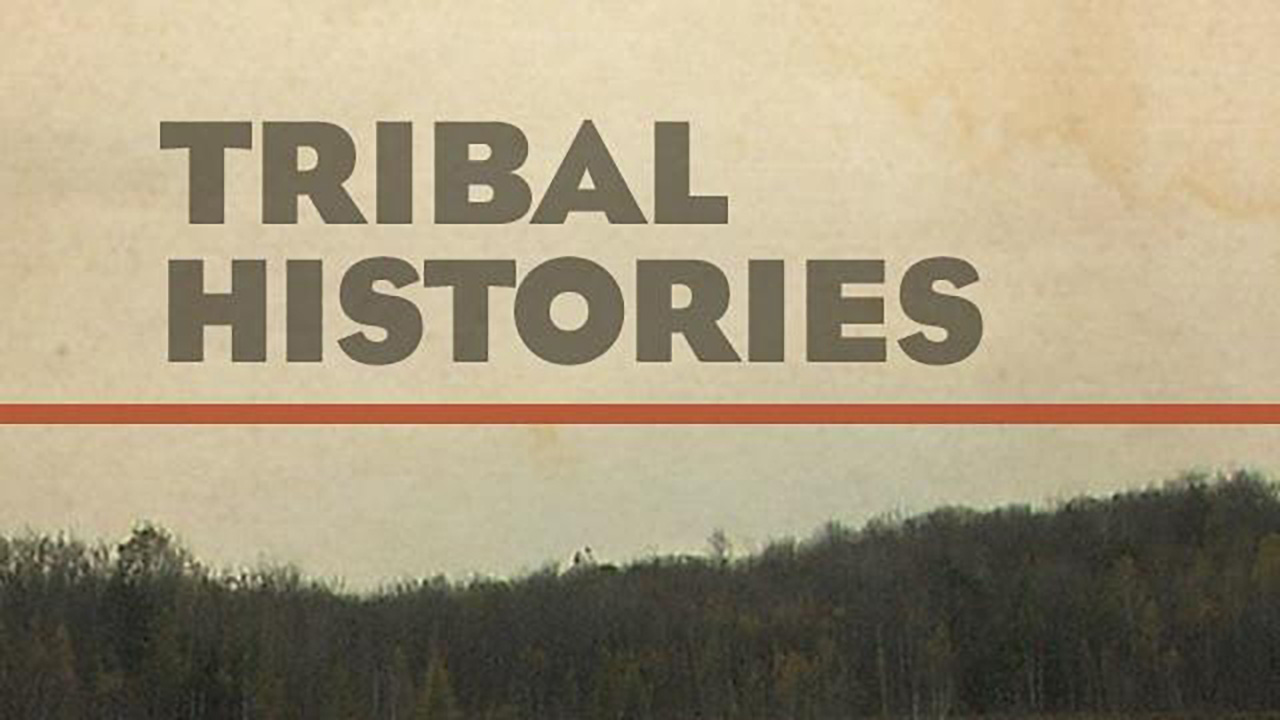




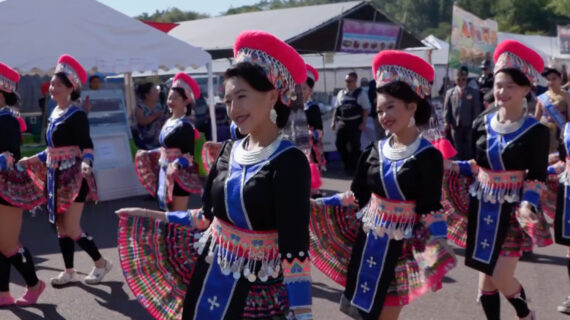
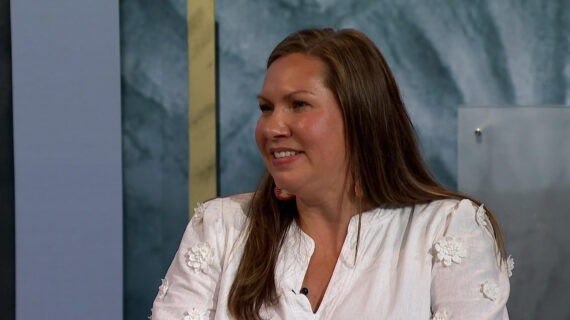
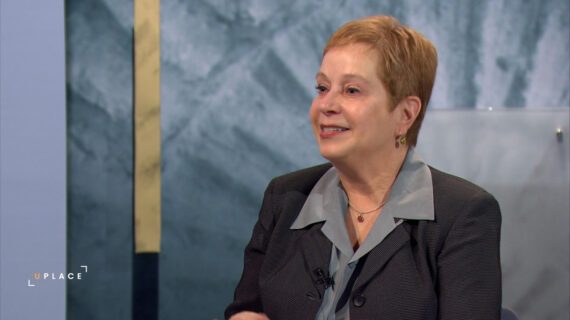
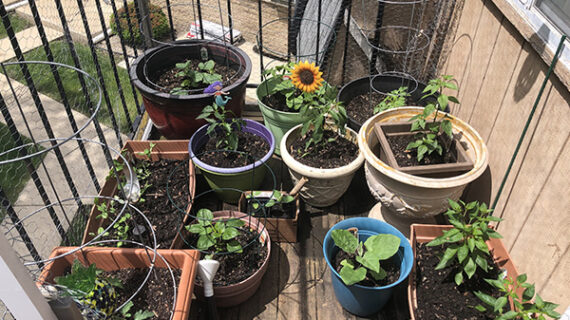
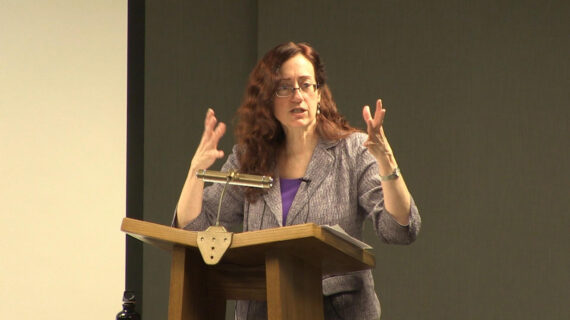
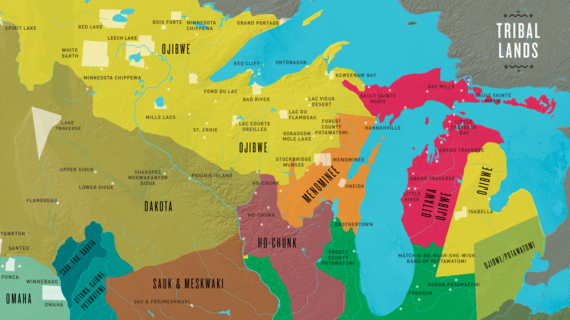

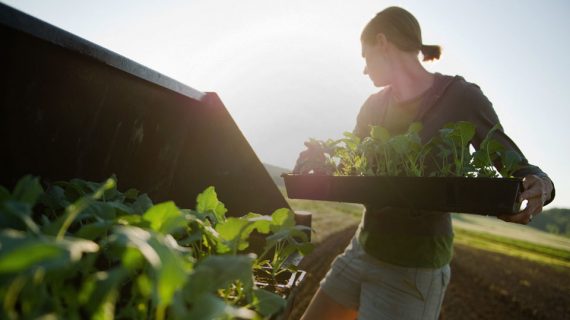



Follow Us